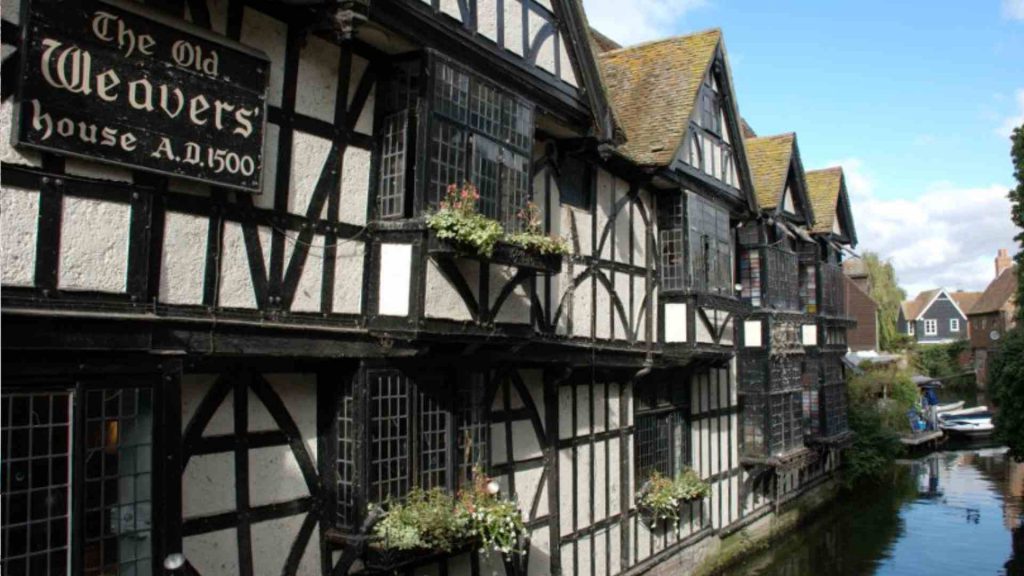The Huguenot settlement in Canterbury started when the authorities considered the community in Sandwich, Kent, to have grown too large. 100 families were accepted in 1575. Its numbers continued to swell in the years following the Massacre of St. Bartholomew in France in 1572, and it came to be the largest foreign population outside London.
The welcome extended to Huguenot refugees reflected, in part, the perceived benefit to the local economy, particularly the potential for developing the textile industry. Using the textile processing and weaving techniques learnt on the continent, new draperies were established in textile towns such as Canterbury. They produced lighter fabrics, made from a mix of fibres, suitable for export to Europe, rather than traditional woollen fabrics. The benefits led the Privy Council to protected Huguenot weavers in Canterbury, when they were attacked by locals. Many successful Spitalfields weavers established successful businesses in Canterbury. When Spitalfields weaving flourished in the 18th century, the Canterbury industry went into decline and ceased entirely in 1837.
Canterbury’s Huguenot congregation was first allowed to worship at St. Alphege Church but as their numbers grew they were invited to use the Western Crypt of Canterbury Cathedral. Migration to Spitalfields, and assimilation, saw numbers fall, and they moved to the smaller Black Prince Chantry in the Cathedral, where the Eglise Protestante Française de Cantorbéry [The French Protestant Church of Canterbury] still meets today.

